Animal Circulatory System
1/22
There's no tags or description
Looks like no tags are added yet.
Name | Mastery | Learn | Test | Matching | Spaced |
|---|
No study sessions yet.
23 Terms
a circulatory fluid
a set of interconnecting vessels
a muscular pump (heart)
What are the the three basic components of a circulatory system?
the circulatory system
connects the fluid that surrounds cells with organs that exchange gases, absorb nutrients, and dispose of wastes
True
(T/F) Circulatory can be open or closed and vary in the number of circults in the body.
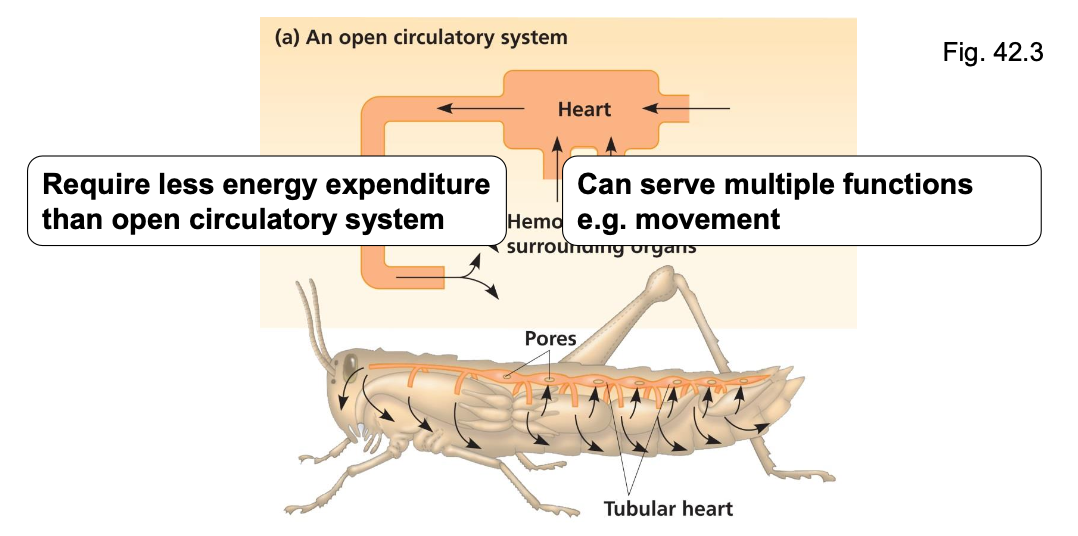
circulatory fluid (hemolymph) bathes organs directly
What is an open circulatory system?
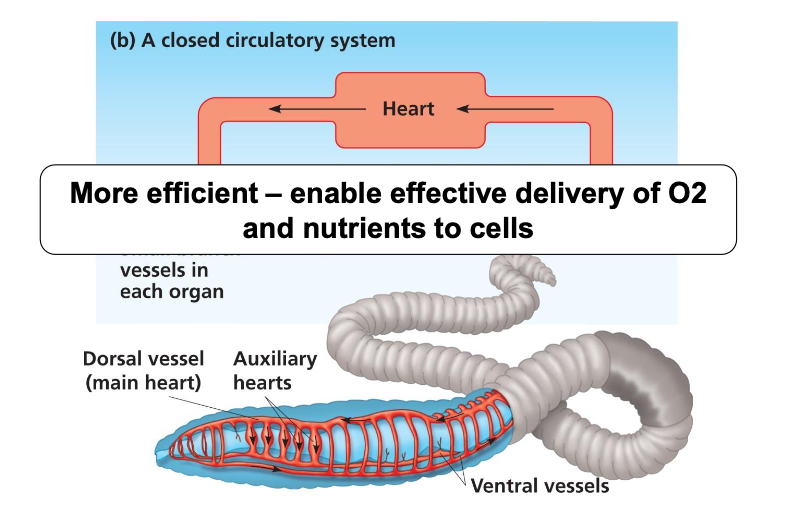
circulatory fluid (blood) confined to vessels and is distinct from interstitial fluid
What is a closed circulatory system?

one-way through three main blood vessels
arteries
veins
capillaries
How does blood flow in closed circulatory systems?
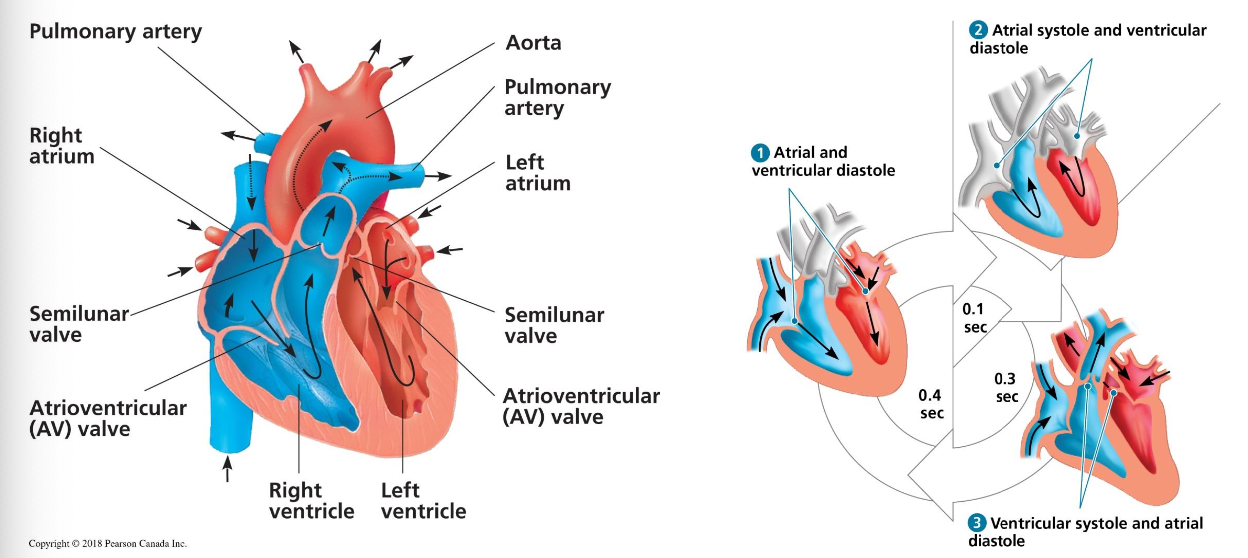
hearts pump to circulate blood through closed circulatory systems
blood enters through an atrium and is pumped out through a ventricle
What types of hearts do closed chambers have?
blood leaving the heart passes through two capillary beds before returning
ex. bony fishes, rays, and sharks have single circulation with a two-chambered heart
What is single circulation?
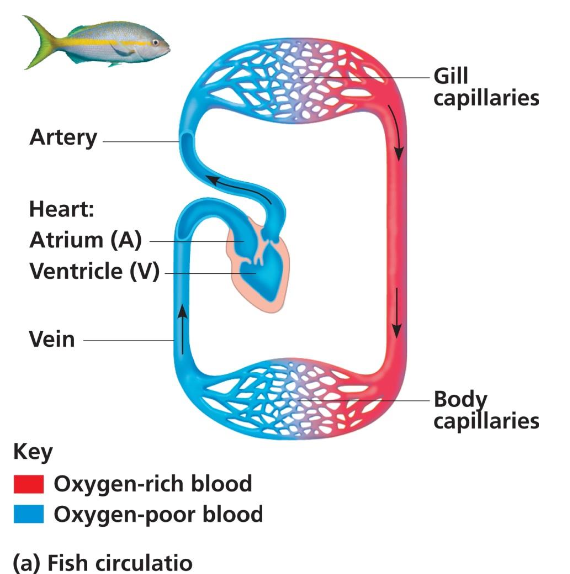
oxygen-poor and oxygen-rich blood are pumped separately
oxygen-rich blood is delivered from the heart to the rest of the body through the systemic circuit
blood travels separately between the heart and the respiratory surfact (pulmonary circuit)
What is double circulation?
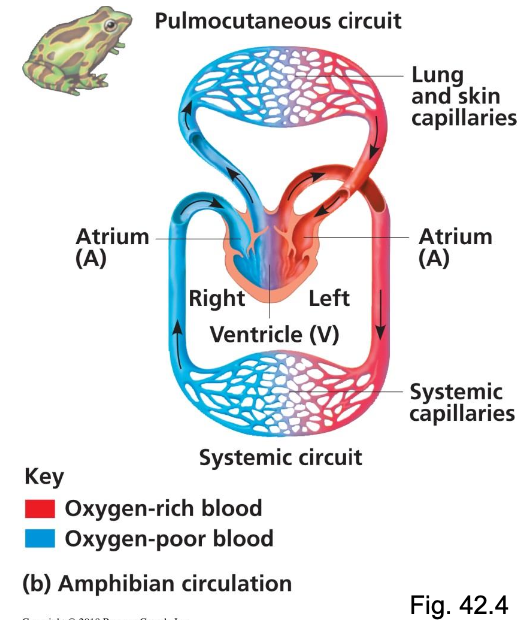
frogs and other amphibians haver a three-chambered heart
two atria and one ventricle
amphibians
oxygen-poor blood flows through a pulmocutaneous circuit to pick up oxygen through lungs and skin
What is incomplete separation?
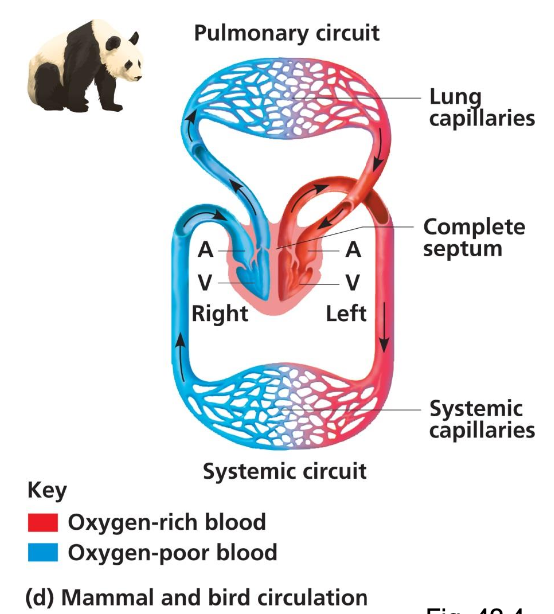
mammals
pulmonary and systemic blood are completely separated
mammals and birds have a four-chambered heart with two atria and two ventricles
What is complete separation?

a vessel’s cavity is called the central lumen
the epithelial layer that lines blood vessels is called the endothelium
arteries and veins have an endothelium, smooth muscle, and connective tissue
What is the structure of blood vessels?
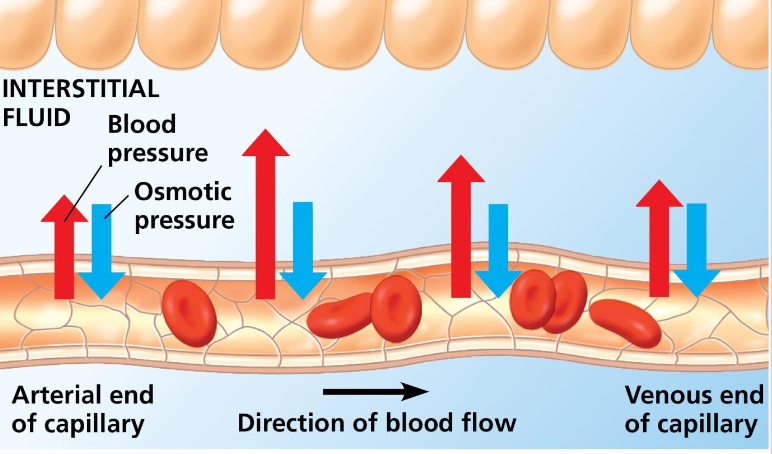
only slightly wider than a red blood cell
velocity of blood flow is the slowest in capillary beds
result of high resistance and large total cross-sectional area
capillaries have thin walls
the endothelium plus its basal lamina to facilitate exchange of materials
osmotic pressure (blue) remains constant
blood pressure (red) highest at arterial end
What is the structure of capillaries?
develop from a common source of stem cells (hematopoietic stem cells) in the red marrow of bones
How are blood cells developed?
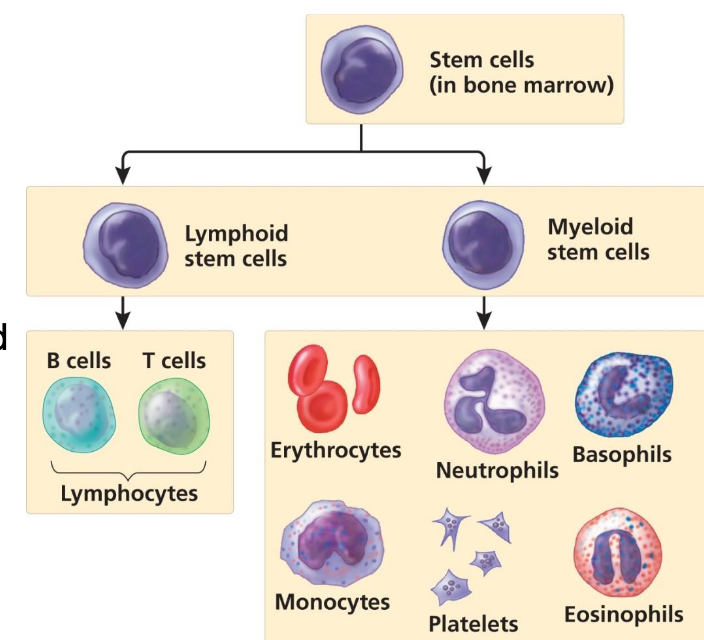
myeloid → cells that function in your circulatory system
lymphoid → cells active in your immune system
lymphocytes → T cells, B cells, natural killer cells, and innate lymphoid cells
What are the two different stem cell lines?
monocytes
neutrophils
basophils
eosinophils
lymphocytes
What are the different types of leukocytes?
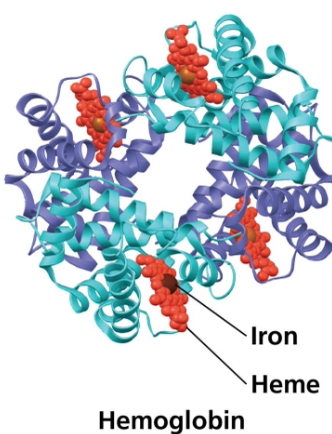
red blood cells transport O2
most numerous blood cells
in mammals, lack nuclei and mitochondria (gives concave appearance)
contains hemoglobin (Hb)
iron-containing protein that transports gases
What are erythrocytes?
partial pressure
the pressure exerted by a particular gas in a mixture of gases (or dissolved in liquid)
gases undergo a net diffusion from a region of higher partial pressure to a region of lower partial pressure
respiratory medium
what animals use air and water as for a source of O2
in a given volume, there is less O2 available in water than in air
obtaining O2, from water requires greater efficiency than air breathing

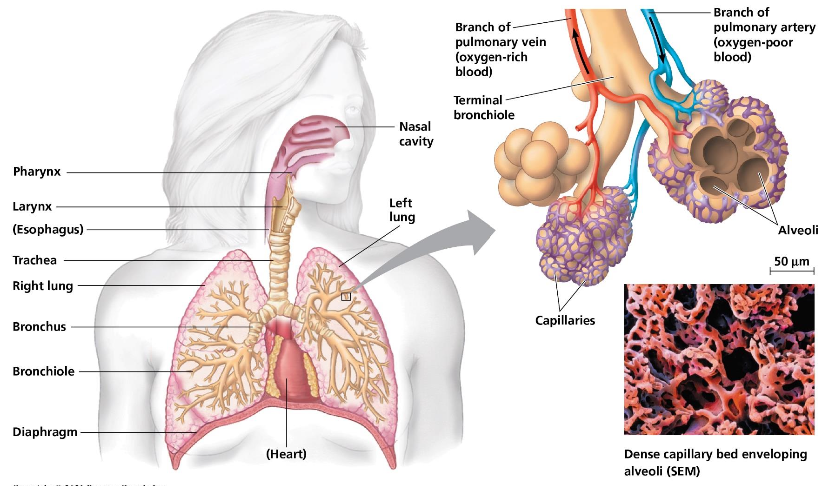
animals require large, moist respiratory surfaces for exchange of gases between their cells and the respiratory medium
gas exchange across respiratory surfaces takes place by diffusion
respiratory surfaces vary by animal and can include the skin, gills, tracheae, and lungs
What is the nature of respiratory surfaces?
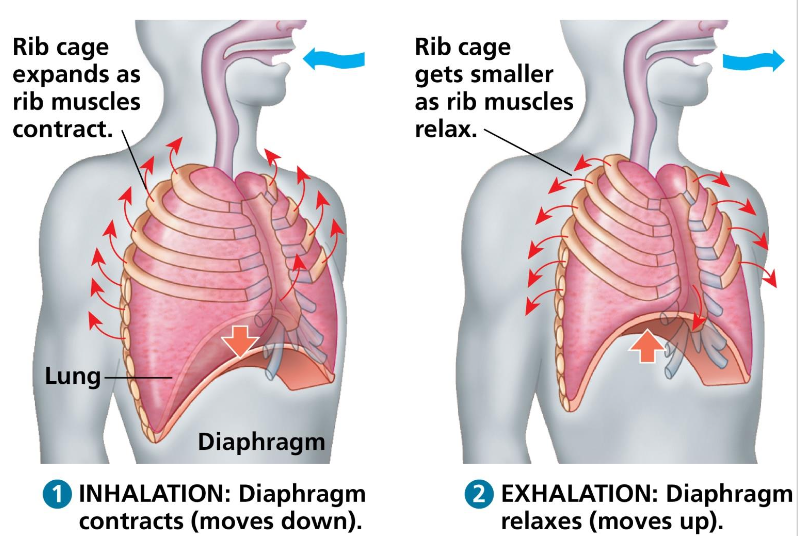
negative pressure breathing → pulls air into lungs
lung volume increases as rib muscles and diaphragm (smooth muscle) contracts
tidal volume → the volume of air inhaled with each breath
vital capacity → maximal tidal volume
How do mammals ventilate their lungs?

gases diffuse from higher partial pressure to lower partial pressure
blood arriving in the lungs has a low partial pressure of O2 and high partial pressure of CO2 relative to air in the alveoli
alveoli → O2 diffuses into the blood, and CO2 diffuses into the air
tissue capillaries → partial pressure gradients favor diffusion of O2 into the interstitial fluids and CO2 into the blood
How are gases loaded and unloaded?

hemoglobin proteins carry O2 from the lungs to the body and CO2 from the body to the lungs
oxyhemoglobin → oxygen bound to hemoglobin
deoxyhemoglobin → oxygen no longer attached
carbaminohemoglobin → CO2 bound to hemoglobin
What is the erythrocyte gas exchange?